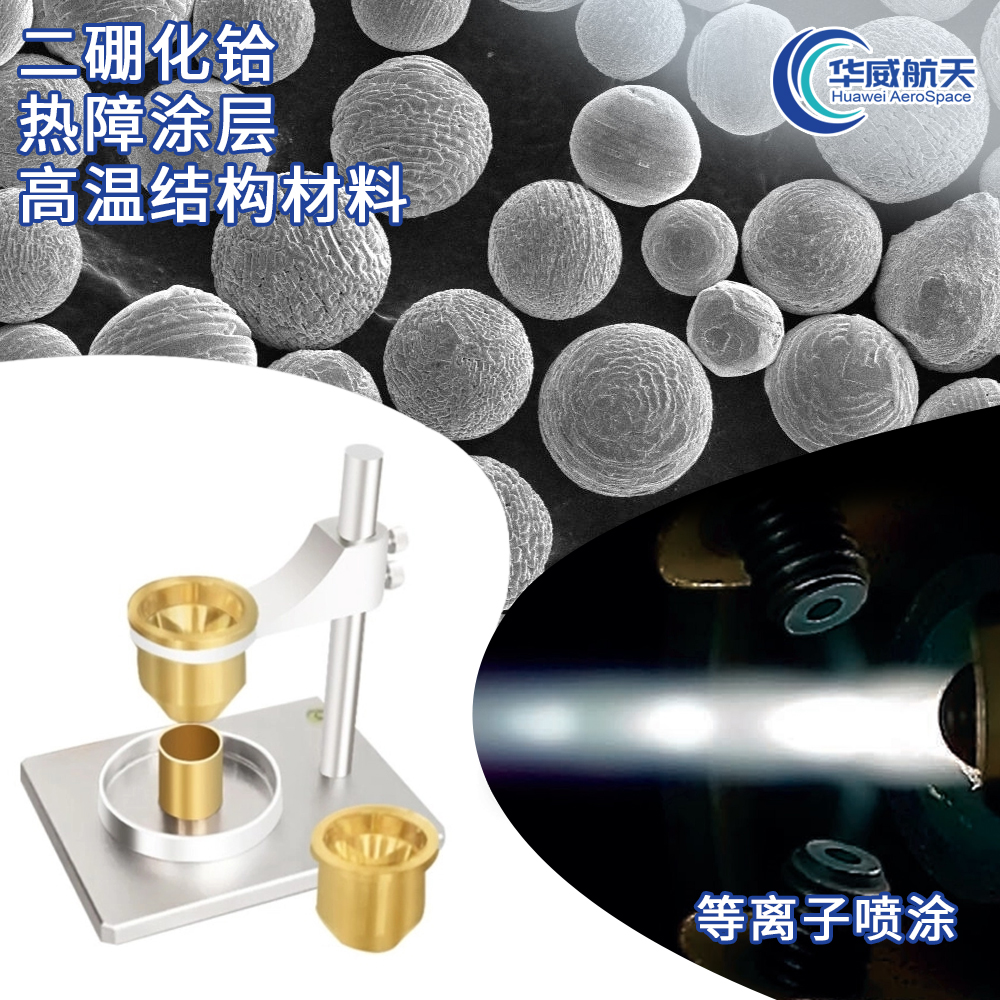Hafnium diboride (HfB2) ceramics has the advantages of high melting point, high strength, high hardness, good electrical and thermal conductivity, etc., and is one of the most promising materials in the family of ultra-high temperature ceramics (UHTCs). HfB2 ceramics are expected to be used as thermal protection materials for the surface of hypersonic vehicles, and can be used as nose cones, wing leading edges of reentry vehicles, fuselages, nose cones and engine ports of hypersonic vehicles, etc.

However, due to the high melting point, strong covalent bond, and low volume diffusion rate of HfB2 materials, the role of grain boundary diffusion and volume diffusion in the sintering process is not obvious, making the sintering of HfB2 materials very difficult. Typically sintering temperatures in excess of 2000°C are required. In addition, the low toughness and poor high temperature oxidation resistance of HfB2 materials also limit its further application and development. In this paper, the multi-phase composite strengthening and toughening design idea is adopted, with HfB2 ceramics as the matrix, zirconium carbide (ZrC) powder, silicon (Si) powder and carbon (C) powder are selected as sintering aids, with the help of ZrC-Si-C The chemical reaction produces zirconium silicide (ZrSi2) and silicon carbide (SiC) in situ. On the one hand, the in-situ reaction promotes the sintering and densification of HfB2 ceramics; on the other hand, the generated ZrSi2 and SiC can improve the comprehensive performance of HfB2 ceramics. HfB2-ZrSi2-SiC ceramic composites were prepared by SPS reaction sintering and reaction hot pressing sintering respectively. With the help of X-ray diffractometer (XRD) and scanning electron microscope (SEM), the phase composition analysis and microscopic morphology observation of the prepared samples were carried out; the relative density, Vickers hardness, flexural strength, fracture toughness and other room temperature properties of the samples were tested respectively; The high temperature oxidation resistance of the sample was tested by high temperature static oxidation method, and its oxidation mechanism was explored; the thermal shock resistance of the composite material was measured by water quenching method, and the thermal shock resistance mechanism of the material was revealed by combining crack and fracture observation. The main research results are as follows: HfB2-ZrSi2-SiC composite material with a relative density of 96.61% was prepared by SPS reactive sintering under the conditions of 1600°C, 40 MPa pressure, 10 min heat preservation, and vacuum. The flexural strength and fracture toughness both increase first and then decrease with the increase of sintering aid ZrC-Si-C content. When the content of sintering aid ZrC-Si-C is 10 wt.%, the comprehensive mechanical properties of composite samples prepared are the best, the Vickers hardness value is 26.80±1.2GPa, the flexural strength value is 504±40MPa, the fracture toughness The value is 4.66±0.21 MPa.ml/2. HfB2-ZrSi2-SiC composites were prepared by reactive hot pressing under the conditions of 30MPa pressure, 120min holding time, and argon (Ar) gas at three sintering temperatures of 1800℃, 1850℃ and 1900℃. The Vickers hardness, flexural strength and fracture toughness of the composites all showed a trend of first increasing and then decreasing with the increase of sintering aid ZrC-Si-C content, when the sintering aid ZrC-Si-C content was 30 wt. The performance of the samples prepared at % is the best. The mechanical properties of the composites also show a strengthening trend with the increase of sintering temperature, and the comprehensive mechanical properties of the prepared samples are the best when the sintering temperature is 1900℃. Among them, the relative density of HfB2-ZrSi2-SiC composite material containing 30 wt.% sintering aid prepared by reaction hot pressing and sintering at 1900℃ is 96.40%, the Vickers hardness value is 19.27±1.01 GPa, and the flexural strength value is 602±47 MPa , The fracture toughness value is 6.18±0.12 MPa·m1/2. The oxidation resistance of HfB2-ZrSi2-SiC composites prepared by reactive hot pressing sintering was determined by high temperature static oxidation method. Three oxidation temperature points of 1000°C, 1250°C, and 1500°C were respectively selected, and after 60 minutes of holding time, the mass change and residual flexural strength change of the composite material samples after oxidation at different temperatures were tested, and the oxidized samples were observed by SEM-EDS. Surface micromorphology and oxide layer cross-section. As the oxidation temperature increases, the mass change of the sample after oxidation increases, and the sample with the sintering aid ZrC-Si-C content of 30 wt.% has the smallest oxidation weight gain, and the weight gain after oxidation at 1000 °C is only is 0.1612 mg/cm2; and its residual flexural strength after oxidation is also the highest, with a value of 790 MPa. It shows that the oxidation resistance of the samples prepared when the sintering aid ZrC-Si-C content is 30 wt.% is the best. The thermal shock resistance of HfB2-ZrSi2-SiC composites prepared by reactive hot pressing sintering was determined by water quenching method, and the thermal shock resistance mechanism of materials was revealed by combining crack and fracture observation. The thermal shock temperature differences of 300°C, 400°C, 500°C, 600°C and 700°C were respectively selected to test the residual flexural strength of the composite material after thermal shock with different temperature differences, and the fracture microstructure of the samples after thermal shock was observed and analyzed by SEM. The results show that when the sintering aid ZrC-Si-C content is 30 wt.%, the HfB2-ZrSi2-SiC composite has the best thermal shock resistance, and its critical thermal shock temperature difference is 515℃.